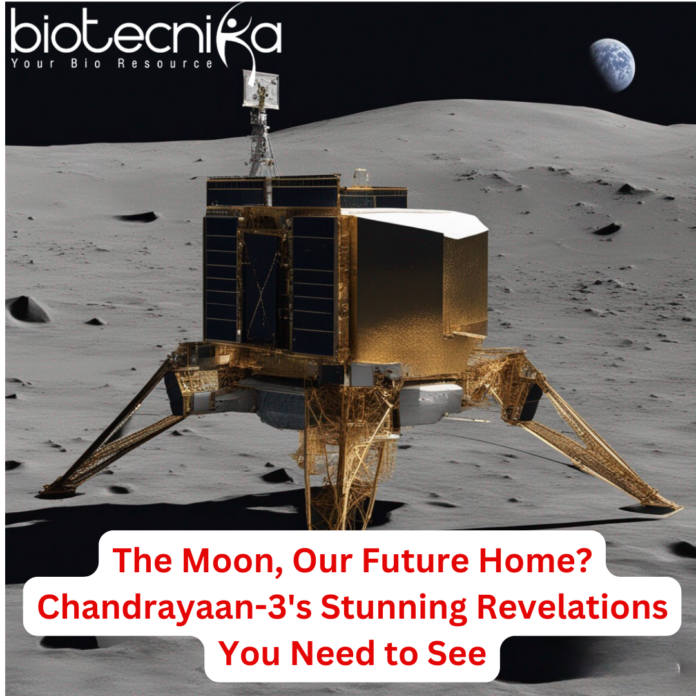Ever since the Vikram lander touched down on the Moon’s surface, it’s been sending back loads of information. This data might seem complicated at first, but when you put it all together, it tells us something fascinating: the Moon might be more suitable for human habitation than we previously thought.
One of the most exciting pieces of information comes from the Vikram lander probe that dug 10 cm into the lunar soil and measured the temperature. It found that just 8 cm beneath the surface, where it’s about 50 degrees Celsius on the surface, it’s as cold as minus 10 degrees Celsius. This discovery is more significant than it might seem.
Scientists had already known that the Moon’s subsurface is cold, but Vikram provided concrete evidence that the lunar topsoil acts like a super-insulator. In a 2015 study titled ‘Determination of temperature variation on lunar surface and subsurface for habitat analysis and design,’ researchers explained that the outermost layer of lunar soil has powerful insulating properties, causing temperatures to drop significantly just a short distance below the surface.
The Moon has extreme temperature variations because it has no atmosphere. During the day, it can get scorching hot at 123 degrees
Celsius, while at night, it becomes incredibly cold at minus 233 degrees Celsius. To create a livable space there would typically require extensive insulation, which would be challenging and expensive to transport from Earth. But Vikram’s findings suggest that we might not need to do that.
By layering processed lunar soil (regolith) on top of a habitat, we can keep the inside comfortable for humans. This method would also help by reflecting sunlight, which raises the temperature of the shielding material and reduces the need for extensive insulation.
Thanks to Vikram’s discoveries, we now know that there’s a significant temperature drop of 60 degrees Celsius from the Moon’s surface to just 8 cm below the ground. This information can help us design habitats better suited for lunar living, especially considering the Moon’s unique thermal properties.
The Pragyan rover also made a promising discovery—it found oxygen in the lunar soil using a laser-based instrument. This means that we have an alternative to relying solely on lunar ice for oxygen production, which is significant because ice isn’t available everywhere on the Moon. The oxygen can be extracted from a substance called ilmenite found in the soil.
All of these findings support a growing area of space science known as In-situ Resource Utilization (ISRU) or Space Resource Utilization (SRU). This field explores how we can use local resources, like lunar soil, to make living and working in space more feasible and sustainable.
- SEO Powered Content & PR Distribution. Get Amplified Today.
- PlatoData.Network Vertical Generative Ai. Empower Yourself. Access Here.
- PlatoAiStream. Web3 Intelligence. Knowledge Amplified. Access Here.
- PlatoESG. Automotive / EVs, Carbon, CleanTech, Energy, Environment, Solar, Waste Management. Access Here.
- PlatoHealth. Biotech and Clinical Trials Intelligence. Access Here.
- ChartPrime. Elevate your Trading Game with ChartPrime. Access Here.
- BlockOffsets. Modernizing Environmental Offset Ownership. Access Here.
- Source: https://www.biotecnika.org/2023/09/vikram-lander-moon-surface-oxygen/




